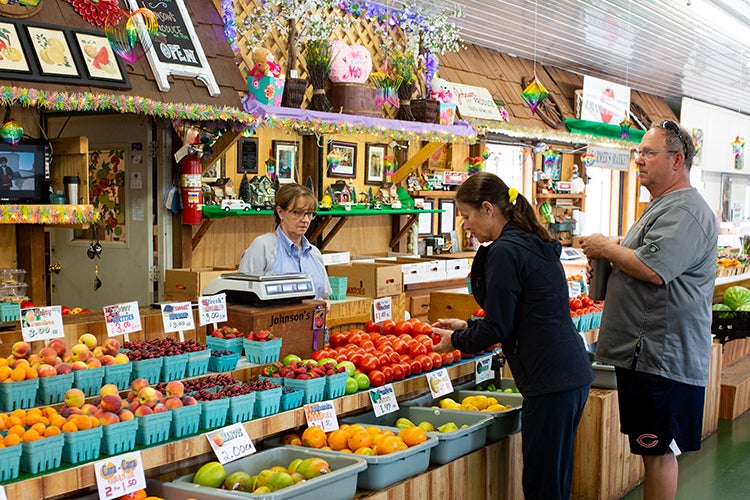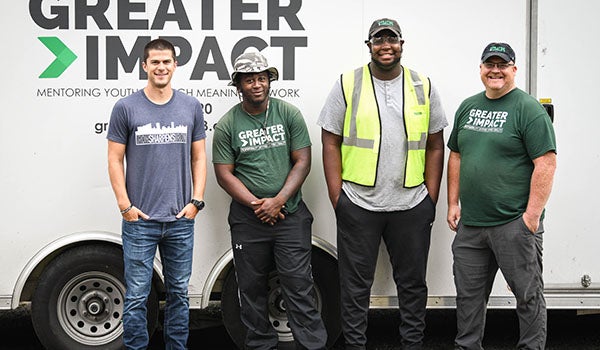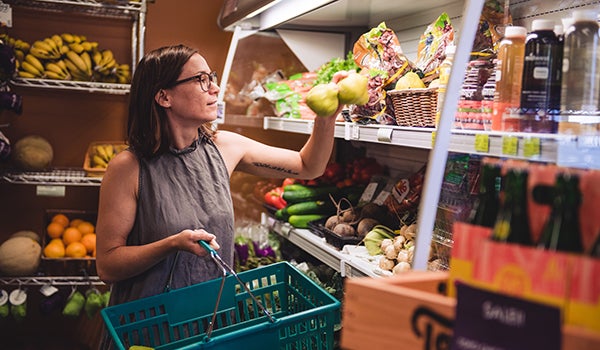Photos by Amanda Seabolt
Picture it: On a sunny summer morning, you head to the banks of the St. Joseph River to stock up on groceries for the week. In the shaded confines of a bustling market hall, you chat with your neighbors, shop for veggies and meats from dozens of area farmers, and, if you are hungry, grab a bite at the on-site cafe.
Does that sound like a day you had last week?
It might have for your grandparents, too.
The South Bend Farmer’s Market has served South Bend in some form or other since 1911 — as an incorporated entity since 1924, and at its current Northside Boulevard location since 1972. Three days a week, 52 weeks a year, the market’s 66 vendors open their doors, and for those who have lived in South Bend for more than a few of those weeks, there is a good chance you have visited. But how can you make the most of your farmer’s market run?
Chef Nate Walenga, the head chef of the South Bend Farmer’s Market Cafe, has three strategies: Come on a weekday, come early or come late.
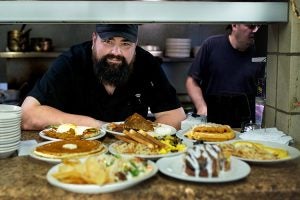 “It used to be that Saturdays were busy at 6 o’clock in the morning, and then it died off,” he says. “But now, we have a younger demographic coming into the market, and they don’t like to get up that early. So if you really just want to come in, get your shopping done and get out, get here at 7.”
“It used to be that Saturdays were busy at 6 o’clock in the morning, and then it died off,” he says. “But now, we have a younger demographic coming into the market, and they don’t like to get up that early. So if you really just want to come in, get your shopping done and get out, get here at 7.”
In the summer, the market is open for 32 hours every week — yet the majority of customers do their shopping at 10 or 11 a.m. on Saturdays, leading to gnarly crowds. Come earlier or later than the average (or, better yet, on a weekday), and Nate says you’ll find not just less congestion but often better deals.
“In the afternoon, you might find a farmer that doesn’t want to take home a case of tomatoes, or doesn’t want to take home all the meat they brought, or whatever they didn’t sell. So that’s a great time,” he says.
Some vendors opt out of the market on certain weekdays, but those who do will have more time to talk — and they are happy to do so.
“I have no problems talking to people,” says Blayne Townsend, a third-generation employee of meat vendor Rochester Meats and Deli. “A lot of times, I get stumped! So if I can’t get you the answer, I will do my best to get an answer.”
Parts of the market are, to the average shopper, pretty straightforward. If you need sweet corn, you know what it looks like. If you have a sweet tooth, stop by Rise ‘n’ Roll. But other areas can be confusing. Rochester Meats alone sells more than 40 kinds of bratwurst, and DeLo’s Cafe boasts 120 different coffee flavors and a floor-to-ceiling wall of often-obscure spices and teas. The challenge of navigating these limitless options brings us to farmer’s market strategy #2: Ask for help.
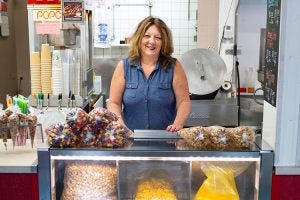 “We are service-oriented, so…ask. That’s why we’re here,” says Jill DeLoddere, DeLo’s co-owner and a member of the market’s board of trustees. “That’s why we are where we are, and we’re not just in a big franchise setting. We want you to ask questions!”
“We are service-oriented, so…ask. That’s why we’re here,” says Jill DeLoddere, DeLo’s co-owner and a member of the market’s board of trustees. “That’s why we are where we are, and we’re not just in a big franchise setting. We want you to ask questions!”
The ability to talk directly with the person who grew or prepared your cilantro or sourdough is one of the things that differentiates the market experience from that of a standard grocery store.
Another is market-maximizing strategy #3: Come hungry.
Economists and dieticians alike claim that shopping on an empty stomach is a bad idea, one that will land you with groceries you don’t need at a price you don’t want. But, at the farmer’s market, arriving sans appetite would mean missing out on the in-house restaurant — and, by extension, your finished-product preview of the goods laid out on the shelves.
Nate estimates that around 85 percent of the food in his cafe comes from vendors at the market. Like the eggs in your omelet? Pop down the hall and buy a few. Thrilled with the tomatoes on your BLT? You know where those came from.
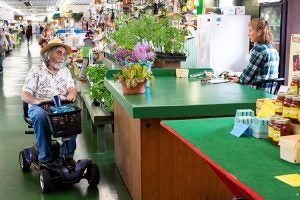 The cafe serves breakfast and lunch on every day that the market is open, and on certain days, the staff serves up special events themed around featured vendors or seasonal foods. This summer, the schedule includes a partnership with Hiatt’s Poultry Farm (Stall 15, if you’re wondering) on July 29 and a corn and sausage roast on Aug. 13.
The cafe serves breakfast and lunch on every day that the market is open, and on certain days, the staff serves up special events themed around featured vendors or seasonal foods. This summer, the schedule includes a partnership with Hiatt’s Poultry Farm (Stall 15, if you’re wondering) on July 29 and a corn and sausage roast on Aug. 13.
“Every two weeks, I do a barbecue event or something outside,” Nate says. “It brings more traffic to the market. …It’s cool!”
At a time when every hip restaurant on earth seems to have a chalkboard filled with their local food suppliers, the chef is passionate about spreading the news of South Bend’s most farm-to-table eatery. The “locavore” trend may seem like the invention of a big-city tastemaker, but at the South Bend Farmer’s Market, it’s just life — as it has been for more than 100 years.
Follow the tips suggested here, and it can be a part of your life, too.

